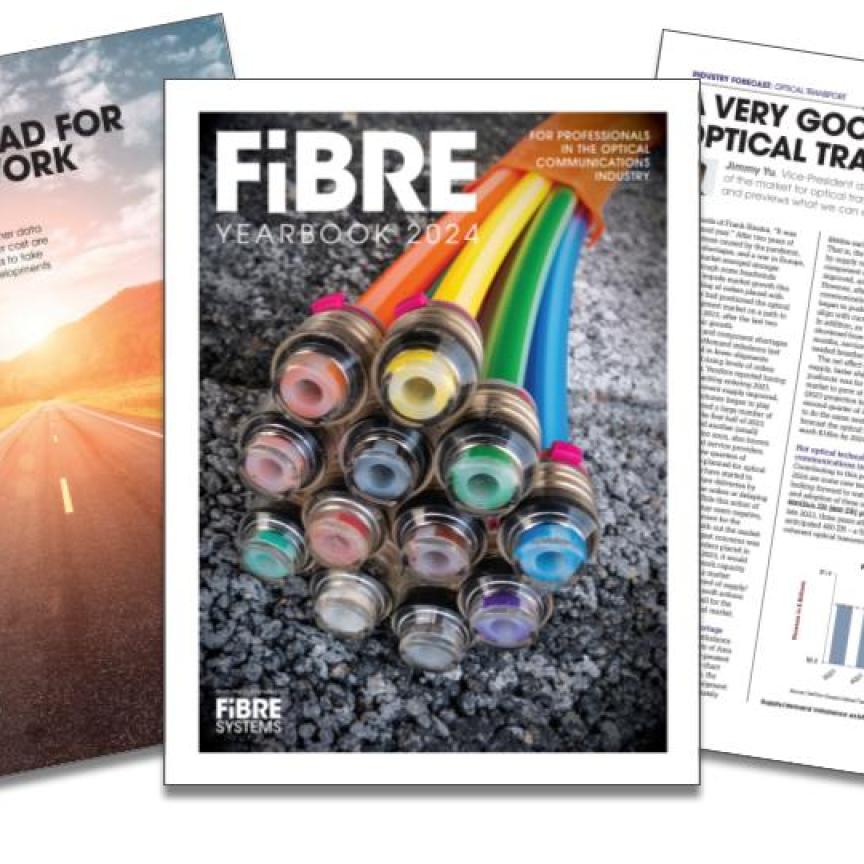A countdown of the most-viewed and industry-shaping developments of 2022 according to Fibre Systems readers
January
At the start of the year, the Fibre Systems audience turned its collective attention to technology, specifically, high-capacity capacity optics. The most widely-read story in January was the news that Aerelion (then known as Telia Carrier) had conducted a successful trial of Infinera’s ICE6 800G technology on its live global network, AS1299.
The trial took place on the 2,396km link in the U.S. between Denver and Chicago. It was performed using ICE6 technology over an existing third-party line system and demonstrated that transmission speeds of 600G and spectral efficiency of 5.33 bits/s/Hz were possible, resulting in a fibre capacity increase of at least 50%. Following the trial, Telia Carrier selected the technology to help with its global network expansion.
Andrew Haynes, COO at Telia Carrier explained at the time: “As a pioneer in deployment of open optical line technologies across the globe, deploying ICE6 on our network will be yet another example of how open and disaggregated networking works and allows for greater efficiency and agility. Deploying ICE6 will enable us to introduce best-in-class technologies and infrastructure capabilities for our customers.”
Nick Walden, Senior Vice President, Worldwide Sales at Infinera added: “Telia Carrier’s embracing of open optical networking enables them to always be able to take advantage of the best technologies to create differentiated value for their customers.”
With the past two years throwing the importance of reliable connectivity firmly into the spotlight, it may be little surprise to note that the other most-read story in January was the news that USA communications regulator the Federal Communications Commission (FCC) launched the Affordable Connectivity Program.
In accordance with Congressional directives in the Infrastructure Investment and Jobs Act, this initiative is the $14.2bn successor to the Emergency Broadband Benefit which was launched to help almost 9 million afford internet access during the pandemic. Since its launch, eligible households have been able to apply to receive up to $30 per month discount toward internet service and up to $75 per month for households on qualifying Tribal lands.
Upon announcement, FCC Chairwoman, Jessica Rosenworcel commented: “The response to the Emergency Broadband Benefit proved what many knew to be true: the cost of high-speed internet is out of reach for too many of us. Now, with the long-term Affordable Connectivity Program, we have the opportunity to enrol even more households and help ensure they can afford the internet connections they need for work, school, healthcare and more for years.”
February
Light began to appear at the end of the tunnel in February, with Covid-related restrictions starting to ease across a number of markets. As people of the world were able to make travel plans again, so, the most popular story in February had an international communications flavour, as Finnish network solutions provider Cinia partnered with Japanese infrastructure firm, Arteria Networks to begin build on a subsea cable system linking Europe and Asia through the Arctic region.
The joint network will run from Japan, via the Northwest Passage, to Europe with landings in Alaska and the Canadian Arctic. European landings are planned in Norway, Finland and Ireland. The planned 14,000km cable system will be able to reduce the optical distance between Asia and Europe, thus minimising signal latency. Alcatel Submarine Networks was chosen as the lead engineering, procurement and construction partner for the project.
Ari-Jussi Knaapila, CEO at Cinia said: “Far North Fiber will be the first multi-continental cable system and the first Pan-Arctic system. Cinia is very pleased to have all three continents represented in the development team, and I warmly welcome Arteria to join the project with Cinia and Far North Digital.”
Koji Kabumoto, Representative Director, President and CEO of Arteria added: “The Far North Fiber project is an epoch-making project to build the last remaining submarine cable route connecting Europe with Japan and Asia at the lowest latency and will greatly contribute to the further development of the digital infrastructure environment in Japan regions such as Hokkaido. In addition, the new international network realised by the Far North Fiber will be able to create new demand for connectivity in a wide range of fields such as industry, academia, and culture in Europe, Japan, and Asia.”
It is predicted that the cable, which has a projected cost estimate of approximately €1bn, will be ready by the end of the year 2025.
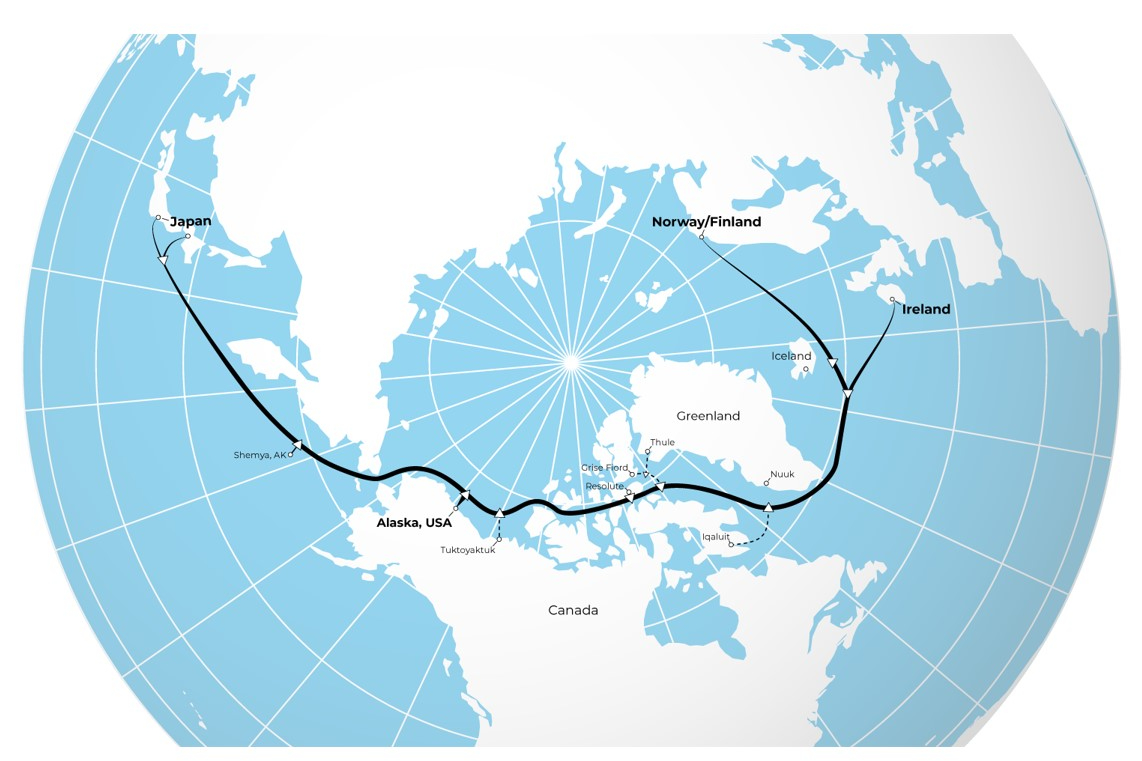
March
Mergers and acquisitions moved to the forefront in March, as Effect Photonics signed a definitive agreement to acquire coherent optical digital signal processing (DSP) and forward error correction (FEC) technology as well the associated engineering teams from Viasat.
The announcement was made during the returning in-person OFC Conference in San Diego and it means that Effect Photonics now owns Viasat’s entire coherent technology stack of all optical functions, including a high-performance tunable laser, together with DSP and FEC.
The move was designed to aid Effect Photonics’ ambition to make high-performance coherent communications solutions widely accessible and affordable. It also enables longer-term economic and environmentally sustainable communications due to the ability to deliver high-end performance and reach within a small footprint and with lower power consumption.
The company said that the benefit to customers would be Effect Photonics’s ability to optimise a complete solution for any application addressing both existing and new possibilities.
Effect CEO James Regan said: “This is a significant step in accelerating our ambition to make coherent optical communications ubiquitous and further drive our product portfolio growth. We look forward to welcoming the team of highly skilled and experienced design architects and engineers who will be joining us to drive the development of energy efficient, high performance and affordable coherent solutions.”
Russell Fuerst, Business Area Leader And Vice President at Viasat added: “Given the trend of the fibre optic communications industry towards consolidation to provide vertically integrated end-to-end solutions, we believe that combining Viasat’s assets and capabilities with the unique integrated photonics capabilities of Effect Photonics will create substantially more market opportunities and better products. By investing in this Netherlands-headquartered company, we will also further expand our presence in Europe and be able to partner with Effect to bring state-of-the-art integrated photonics to Viasat’s own customers.”
April
In April there was an appetite from Fibre Systems readers for finding out about investments, with the two top stories detailing how two independent operators and an independent ISP secured millions in funding for fibre roll-out. Firstly, Northern Ireland full fibre operator, Fibrus secured £220m from a consortium of banks including the UK Infrastructure Bank, to fund fibre roll-out in Northern Ireland.
This investment was funded by public and private capital including Project Stratum, the NI Executive scheme which has provided £197m to boost rural broadband connections. Colin Hutchinson, CFO at Fibrus welcomed the announcement, saying: “We are very well aware of the importance of high-speed broadband across Northern Ireland and with every connection we make, we are making lives better. Too many homes and businesses have been left behind by other broadband providers and that is not acceptable. This latest investment helps us to meet our current plan of connecting 330,000 premises and we are already well ahead of schedule.”
UK altnet, Netomnia and sister company, ISP YouFibre also secured funding to the tune of £295m, led by DigitalBridge Investment Management, the investment management platform of DigitalBridge Group. The investment was designed to help Netomnia accelerate and scale its fibre roll-out, in order to reach a million properties passed by 2023.
DigitalBridge joined existing shareholders ESO Capital Partners, AdvenCap, Avenue Capital Group and Soho Square Capital and builds on the £123m investment secured towards the end of 2021.
Jeremy Chelot, CEO at Netomnia said: “We are thrilled to partner with DigitalBridge and benefit from their support and industry expertise as we work towards our target of one million premises passed in the next two years. We are scaling rapidly and aim to play an active role in unleashing the UK's digital potential by delivering the benefits that come with multi-gigabit fibre broadband.”
Manjari Govada, Principal at DigitalBridge, added: “We have known Jeremy for several years and are excited to partner with him in scaling the group into a premier FTTP provider in the UK. We have been highly impressed with the growth of the business and the best-in-class team he has assembled.”
May
This is the fourth edition of the Fibre Yearbook, and it’s interesting to note that this is also the fourth time that the FTTH Council Europe’s market reports have been the most-viewed story during the month of reveal. This year the studies were revealed back at their usual home, at the FTTH Conference, which took place in Vienna.
The Market Panorama report revealed that the total number of homes passed with FTTH/B in the EU39* countries reached nearly 198.4 million homes in September 2021, compared to 176.3 million in September 2020. The main movers in terms of homes passed in absolute numbers were France (+4.3 million), the UK (+3.4 million), Germany (+2.4 million) and Italy (+1.5 million). The number of FTTH and FTTB subscribers in the EU39 region reached 96 million, with EU27+UK accounting for 60%. The five fastest growing markets in terms of new subscribers were France (+3.8 million), Spain (+1.2 million), Romania (+1 million), Italy (+820 thousand) and the UK (+765 thousand).
The eagerly anticipated Global Ranking revealed that 20 countries achieved penetration rates higher than 50%. The global top five ranking was led by UAE with 97%, followed by Singapore (95.8%), China (94.9%), South Korea (91.1%) and Hong Kong (86.2%).
In the European region, for the third consecutive year in a row, Iceland topped the European FTTH/B penetration ranking with a 78.4% penetration rate. It was followed by Spain (68.4%), with Sweden grabbing third place (64.4%). Seven countries passed the 50% penetration rate mark (Iceland, Spain, Sweden, Portugal, Norway, Romania, Latvia).
The council’s Market Forecasts were consistent with previous estimates and predicted around 199 million homes passed for FTTH/B in 2027 in EU27+UK and 309 million homes passed in EU39 region. It is expected that the top three countries in terms of homes passed will be France (31.1 million), United Kingdom (30.1 million) and Germany (26.9 million).
Eric Festraets, President of the FTTH Council Europe said: “The data from the latest Market Panorama confirms that fibre roll-out is steadily advancing at an increasingly faster pace. We can say with confidence that we are on the right track to meet the EU’s ambitious connectivity targets set out by ‘Gigabit Society 2025’ and ‘Digital Compass 2030’ strategies, yet the current momentum needs to be maintained and for this to happen the support at the political and regulatory level will be key.”
Vincent Garnier, Director General of the FTTH Council Europe added: “The data clearly shows that we are achieving great progress in terms of fibre roll-out, thus contributing to the twin digital and green transition that will reshape how Europeans work, live and do business. The full fibre connectivity will be key to achieving the EU’s ambitious climate and sustainability targets. Moreover, the Covid 19 pandemic led to more data traffic and more demand, clearly demonstrating the necessity to intensify FTTH deployment and adoption.”
* EU39: EU27 countries + United Kingdom, 4 CIS countries (including Kazakhstan and Ukraine), and also Iceland, Israel, North Macedonia, Norway, Serbia, Switzerland and Turkey
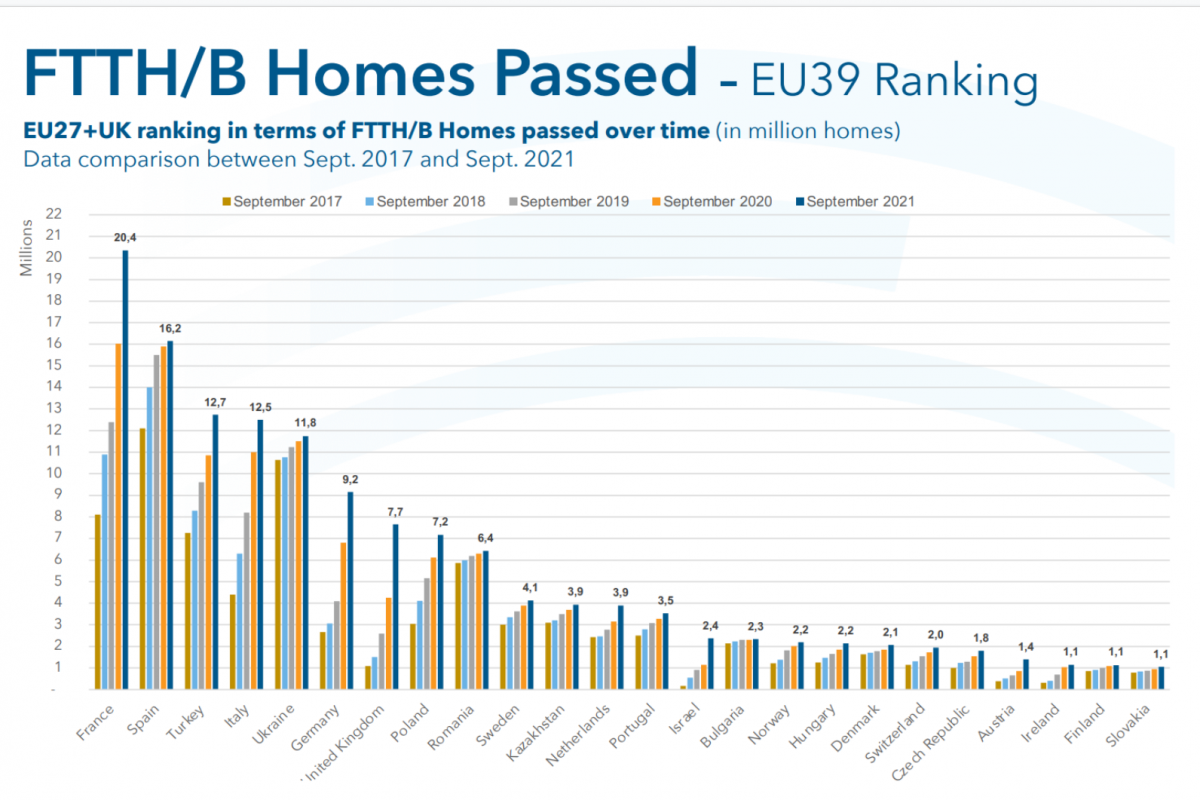
June
Sticking with the FTTH in Europe theme, the Fibre Systems audience flocked to the website in June to find out more about how Deutsche Telekom and Glasfaser Ruhr agreed on large-scale cooperative FTTH expansion in the German city of Bochum.
The project has a total value of €185m. Glasfaser Ruhr is planning and building the network, while Telekom will operate the network and lease the infrastructure for at least 30 years.
The companies aim to bring about a digitisation push for the Ruhr area together. By 2032, Bochum, which is one of the largest cities in the metropolitan region, should have a comprehensive fibre optic network, with more than 134,000 direct fibre optic connections (FTTH ) created. The completed network will also be open to other telecommunications providers, with the prerequisite that this is a commercial agreement on fair, market-economy terms.
Bochum's Lord Mayor Thomas Eiskirch commented: “The expansion project is the first fibre optic cooperation project in the Ruhr area. In Bochum we are building the network of the future together. An efficient telecommunications network is an important location factor for private households and companies. The past few years have shown how important home office, teleworking, cloud-based solutions and networking are for households and companies. In the Bochum strategy, we have set ourselves the goal of further promoting the topics of digitization, modern workplaces and services. The fibre optic network is an excellent basis for this.”
Srini Gopalan, Telekom board member responsible for business in Germany commented: “The Ruhr area is one of the most populous metropolitan regions in Europe. The need for high-performance digital infrastructure is high here. Glass fibre is the network of the future. Together with Glasfaser Ruhr we will offer people in Bochum access to this network. No company can digitise Germany alone. Cooperations are and will therefore remain a mainstay of our fibre optic strategy. In our partnership with Glasfaser Ruhr, each party contributes their strengths - people and companies on site benefit from this.”
Patrick Helmes and Christian Graumann, both managing directors of Glasfaser Ruhr, added: “By the end of 2022, Glasfaser Ruhr will have connected around 33,000 households in Bochum to its fibre optic network. Now we are taking the next step together with Telekom. We are pleased to have gained a strong partner for the expansion project. The area-wide expansion for Bochum is a huge infrastructure project that we will now tackle together with full force.”
July
In July, it was all about access equipment, and in particular, PON technology, as the most popular story told of how UK independent, CityFibre entered into a supply partnership with Nokia for work on its open access network that will connect up to 8 million premises in 285 UK cities, towns and villages.
The provider is using Nokia’s access nodes for its nationwide network of purpose-built fibre exchanges, fibre modems for customer homes and IP aggregation switches. The Lightspan access nodes are used by CityFibre to offer wholesale customers multigig residential broadband (up to 10Gb/s in both directions) and higher bandwidth services such as connecting enterprises and providing backhaul for mobile networks. Powered by Nokia’s Quillion chipset, the same access nodes can be used for both XGS-PON and 25G PON (25Gb/s) on the same fibre, therefore making the network future-proof.
John Franklin, Chief Technology And Information Officer at CityFibre said: “CityFibre is committed to building a full fibre network that is ‘better by design’, providing our partners and their customers with the fastest and most reliable services at the best value. By partnering with Nokia we have enlisted a trusted and market-leading technology vendor to help support a nationwide 10Gb/s XGS-PON technology deployment programme.
Sandy Motley, President, Fixed Networks at Nokia, added: “The demand for ever-faster speeds continues and we’re delighted that our 25G ready solution has been chosen by CityFibre to enable their GPON to 10G XGS-PON national network upgrade program, supporting their mission to offer the highest capacity wholesale services into the UK market.”
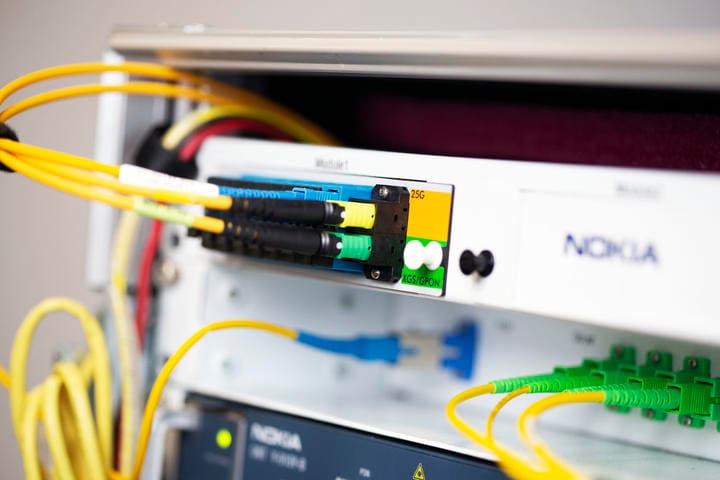
August
In August there was an appetite for information about Google’s Equiano cable, as the 144Tb/s, 12 fibre-pair subsea cable arrived in South Africa. Equiano is a private subsea cable that connects Africa with Europe, starting in western Europe and running along Africa’s west coast, from Portugal to South Africa, with branching units that can extend connectivity to additional African countries. The cable was Google’s third private international cable after Dunant and Curie, and its 14th subsea cable investment.
Its infrastructure is based on space-division multiplexing (SDM) technology and incorporates optical switching at the fibre-pair level, rather than wavelength-level switching. This is designed to simplify the allocation of cable capacity, providing the flexibility to add and reallocate it in different locations as needed.
West Indian Ocean Cable Company (WIOCC) is a key partner in Equiano, landing the cable in Lagos, Nigeria, and owning a full fibre pair on the system. As a fibre pair owner, the company’s Equiano capacity is upgradable fully under its own control. It owns and manages its own submarine line terminating equipment, choosing to light and upgrade its capacity as it wishes to meet the needs and demands of its clients.
Services available from WIOCC in South Africa include high-quality carrier IP Transit, point-to-point national connectivity and high-performance metro connect, and open access colocation services in specific locations – via OADC.
Chris Wood, CEO at WIOCC Group said: “Our investment in Equiano continues our long-standing policy of making strategic investments in subsea cables. We own almost a third of the >10Tb/s EASSy system, which extends from South Africa along Africa’s eastern coastline to Djibouti and Port Sudan; we deliver more capacity than any other carrier on the WACS system, which links South Africa to western Europe and lands in many countries along the west coast of Africa; and we are a member of the 2Africa cable, which will bring another high-capacity connectivity option to Africa during 2023/24.”
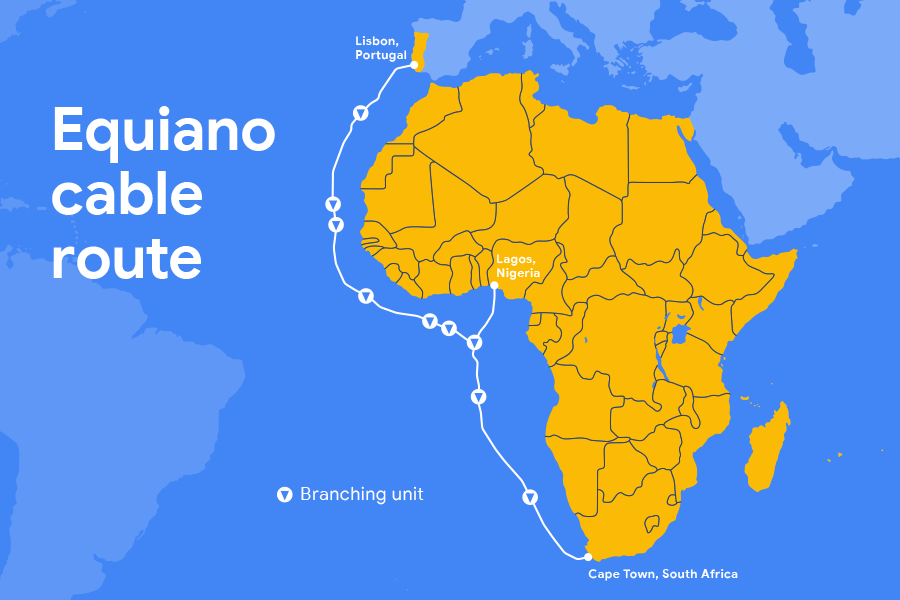
September
The appetite for investment news made a comeback in September, as UK alternative network provider, Brsk, secured a £103m debt investment from funds managed by Ares Management Corporation’s (Ares) Infrastructure Debt strategy. The company said at the time that the funding is able to be upsized to £178m over time to support future growth.
Brsk was founded by Giorgio Iovino and Ian Kock in 2020, both founding members of Vumatel in South Africa. The provider started its network build in West Yorkshire, UK and expanded across four regions covering a total of 70,000 premises passed within 18 months from launch. It is adding more than 10,000 premises per month with plans to double that build rate in the near term.
Iovino said of the new investment: “We are delighted to welcome Ares as our new financing partner. This financing comes at an important time as we continue to invest in ramping up our build rate to expand our network and achieve our goal of 1 million premises passed. People in the UK have suffered from poor broadband for too long. We will continue to upgrade areas that are reliant on outdated copper connectivity and deliver full fibre broadband with an outstanding customer experience.”
James Fox, Managing Director, Infrastructure Debt at Ares added: “We have been impressed by the experience of the Brsk management team and share their enthusiasm for improving digital connectivity across the UK. We are proud to be partnering with Giorgio, Ian and the team in delivering gigabit broadband to communities across the regions.”
Staying in the UK, and the other most widely-read story for the month was the news that TXO, a provider of critical telecom network hardware and asset management services, launched a range of FTTx street cabinets to help service providers avoid supply chain challenges. The cabinets offer 10- to 12-year lifecycles and can be delivered within eight weeks, which is significantly less than the current supply-chain delivery time of up to a year.
It’s a response to the drive to speed up connectivity rollout, as street cabinets enable the distribution of fibre from a street to a home or business, but supply chain issues are impacting this. TXO plans to service the street cabinets with refurbished equipment as part of its circular economy model.
Darren Pearce, Group CEO at TXO said of the launch: “A lack of fibre cabinets is a growing issue in the UK, impacting many businesses and consumers. By servicing our street cabinets with refurbished parts, operators can reap the benefits of the circular economy, such as lowering carbon emissions, minimising waste and cost reduction.”
This focus on the circular economy and wider sustainability is delivering growth for TXO, as Kieran Crawford, Group Sales Director, told Fibre Systems: “There are three things driving our business at the moment: sustainable practise, which we have been preaching about since 2005; the supply-chain challenges, and cost. Shortages have been driving a lot of behavioural change, with procurement also getting smarter about planning ahead. OEMS are the second biggest users of second-hand products internationally and we see much more awareness about this now. The circular economy will see acceleration and, alongside the growth of the alt-nets, which obviously tend to be smaller and more agile, there’s a real shift in awareness going on.”
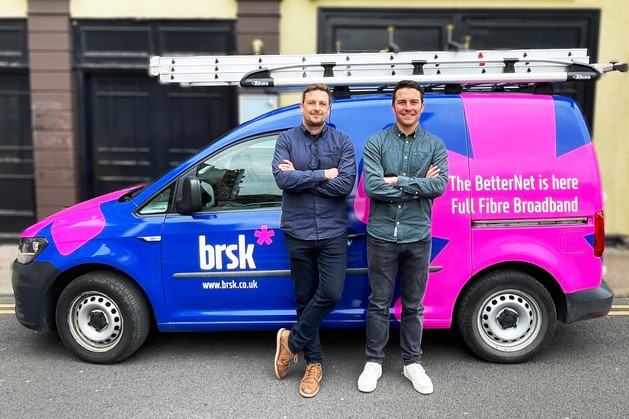
October
FTTH in the USA caught people’s interest in October, as Google Fiber launched 5 and 8Gb/s services. The company said that both the 5 and 8Gb/s products offer symmetrical upload and download speeds, a wifi 6 router and up to two mesh extenders. The 5Gb/s service costs $125-per-month and 8Gb/s costs $150-per-month.
The company started with a call for customers to test these new speed tiers, beginning with eligible existing customers in Utah, Kansas City andWest Des Moines.
In a blog post on the announcement, Google Fiber’s Director of Product Management, Amalia O'Sullivan said: “At Google Fiber, we want to make sure our customers are ready for whatever the internet throws their way. While 2 Gig answered the call for many gamers and power streamers, 5 Gig and 8 Gig are designed for even heavier internet users — creative professionals, people working in the cloud or with large data, households with large shared internet demands. People who create and utilise large files need the ability to transfer them efficiently. For those who work on the cloud or in real time, like with financial transactions, it’s helpful to know there’s less lag between pushing send and making something happen. 5 Gig and 8 Gig can help these customers take on whatever they need online and be ready for whatever is coming next.”
November
mergers and acquisitions were back on the agenda in november, as Lumen Technologies entered into an exclusive agreement with digital infrastructure firm, Colt Technology Services for the proposed sale of the former’s Europe, Middle East and Africa (EMEA) business to the latter for $1.8bn. Lumen said at the time that the purchase price represents a strong ~11x multiple of the EMEA business's estimated 2021 adjusted EBITDA. The additional capital and a more streamlined portfolio will help to drive more focused investments on enterprise growth and help maintain Lumen's balance sheet. The terms of the transaction also enable Lumen to continue to serve multinational enterprise customers through its strategic partnership with Colt.
The transaction will extend Colt's infrastructure to new geographic markets, boosting the services and capabilities it delivers to global enterprises and strategic partners. It also offers Colt access to a full range of product solutions for diversified enterprise, hyperscaler, government and wholesale customers. The move positions Colt to meet growing enterprise and international IP traffic in EMEA via extensive terrestrial and subsea reach.
Most of Lumen's EMEA employees would join Colt after the transaction closes. Colt and Lumen will establish a strategic relationship that will enable Lumen to continue delivering a seamless experience for its multinational customers with needs in EMEA. The partnership will also allow Colt to continue serving the needs of the EMEA-based customers with service needs outside of EMEA.
Jeff Storey, CEO at Lumen says: "We are continuing to execute on portfolio optimisation at Lumen, creating additional value for our shareholders by monetizing non-strategic assets at accretive multiples. This transaction would enhance our focus so we can invest more efficiently in our most strategic opportunities – our key enterprise and quantum fibre initiatives – and partner with regional leaders like Colt in Europe and Cirion in Latin America to continue serving our multinational enterprise customers. Colt's strong reputation and customer focus make them the ideal partner to serve the needs of our customers, and we expect to remain Colt's partner of choice for their customers' needs in North America."
Keri Gilder, CEOat Colt Technology Services adds: "This transaction would mark the next chapter in Colt's exciting story of global growth and world-class innovation. We're deeply committed to building extraordinary connections for our people, customers and partners across our digital infrastructure. This acquisition would strengthen and extend these connections across existing and new geographies, helping us to accelerate growth and bring the power of the digital universe closer to our customers."
December
All eyes were back on FTTH in December, as Deutsche Telekom announced its plans to significantly increase the pace of its fibre rollout with the addition of between 2.5 and 3 million connections in 2023.
The company said that it was on track to achieve the goal of offering FTTH connections to an additional 2 million premises. By the end of 2022, Telekom reached a total of 5.2 million connections, while by 2024, it is expected to have more than 10 million connections.
As part of the move, Deutsche Telekom also plans to increase the number of fibre optic installers in the Fiber Factory by 50%.
Srini Gopalan, responsible for business in Germany at Telekom says: “Our fibre optic engine is running. We have built more fibre this year than all other competitors combined. In the second phase, we will bring even more fibre even faster to our customers. It's all about growth and scaling. We have a clear plan that we are implementing with our strong team," said. "Our 5G coverage already reaches 94% of people in Germany a good three years after launch. Whether mobile or fibre, our ambition is to be ahead for our customers. The increase we have set ourselves for fibre optic expansion in 2023 is enormous. To ensure that we can continue to deliver on our promises, we need to invest in more than just network technology. We want to hire up to 1,000 new fibre experts, the majority of them for the installation area. We urgently need this power to get superfast connections into people's living rooms."


